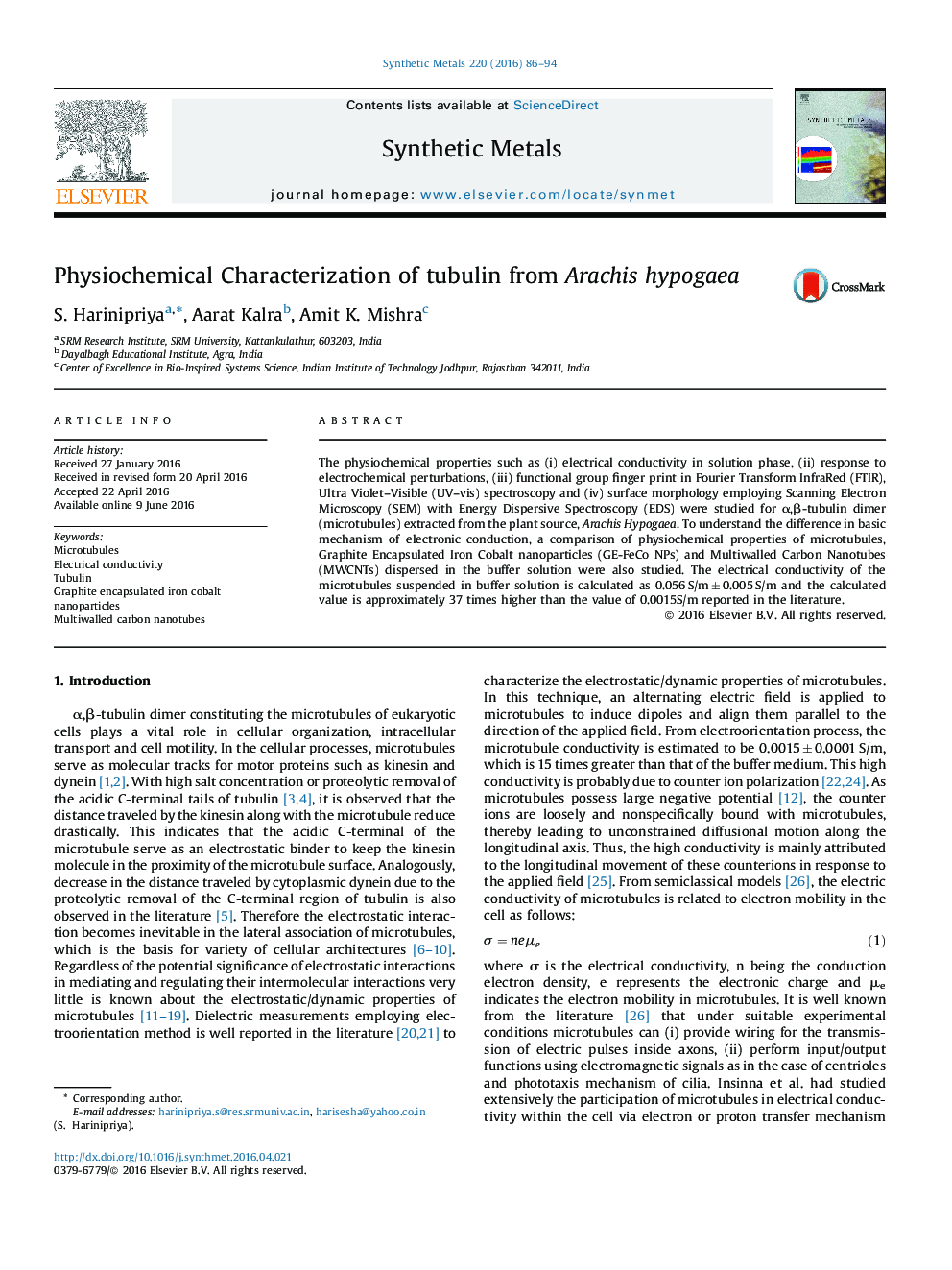| کد مقاله | کد نشریه | سال انتشار | مقاله انگلیسی | نسخه تمام متن |
|---|---|---|---|---|
| 1440069 | 1509357 | 2016 | 9 صفحه PDF | دانلود رایگان |

• Microtubules extracted from Arachis Hypogaea.
• Electrical conductivity as 0.056 S/m.
• The value is 37 times higher than literature.
The physiochemical properties such as (i) electrical conductivity in solution phase, (ii) response to electrochemical perturbations, (iii) functional group finger print in Fourier Transform InfraRed (FTIR), Ultra Violet–Visible (UV–vis) spectroscopy and (iv) surface morphology employing Scanning Electron Microscopy (SEM) with Energy Dispersive Spectroscopy (EDS) were studied for α,β-tubulin dimer (microtubules) extracted from the plant source, Arachis Hypogaea. To understand the difference in basic mechanism of electronic conduction, a comparison of physiochemical properties of microtubules, Graphite Encapsulated Iron Cobalt nanoparticles (GE-FeCo NPs) and Multiwalled Carbon Nanotubes (MWCNTs) dispersed in the buffer solution were also studied. The electrical conductivity of the microtubules suspended in buffer solution is calculated as 0.056 S/m ± 0.005 S/m and the calculated value is approximately 37 times higher than the value of 0.0015S/m reported in the literature.
A novel methodology to estimate electrical conductivity of microtubules in solution employing linear sweep voltammetry and lumped equivalent circuit model.Figure optionsDownload as PowerPoint slide
Journal: Synthetic Metals - Volume 220, October 2016, Pages 86–94